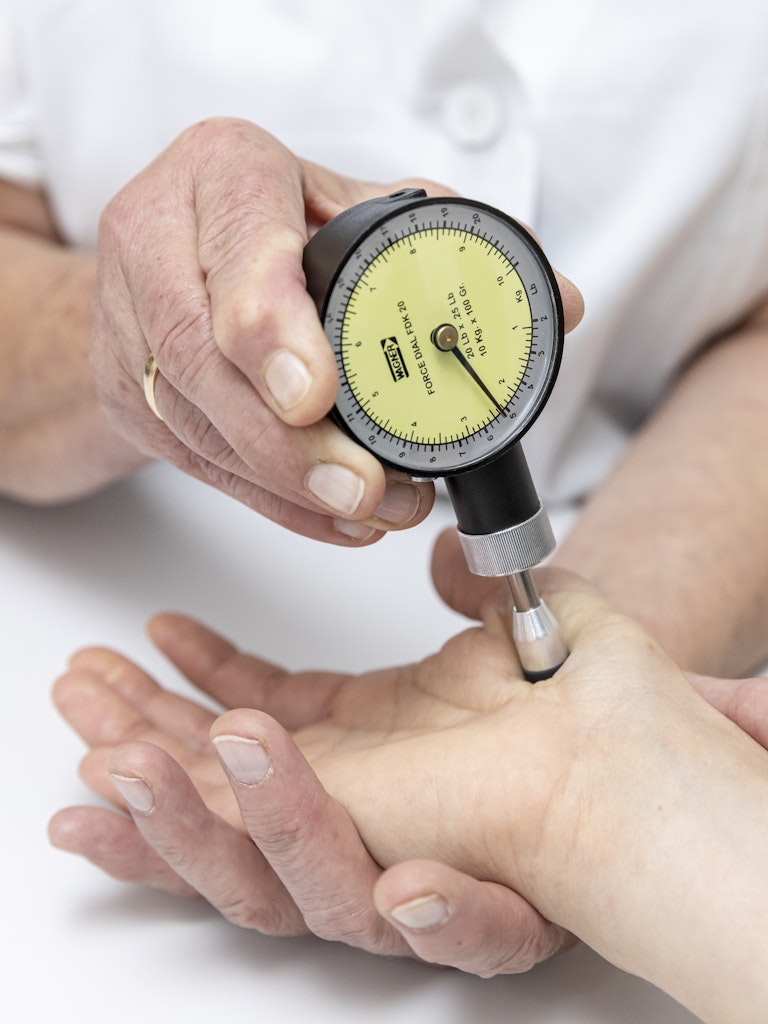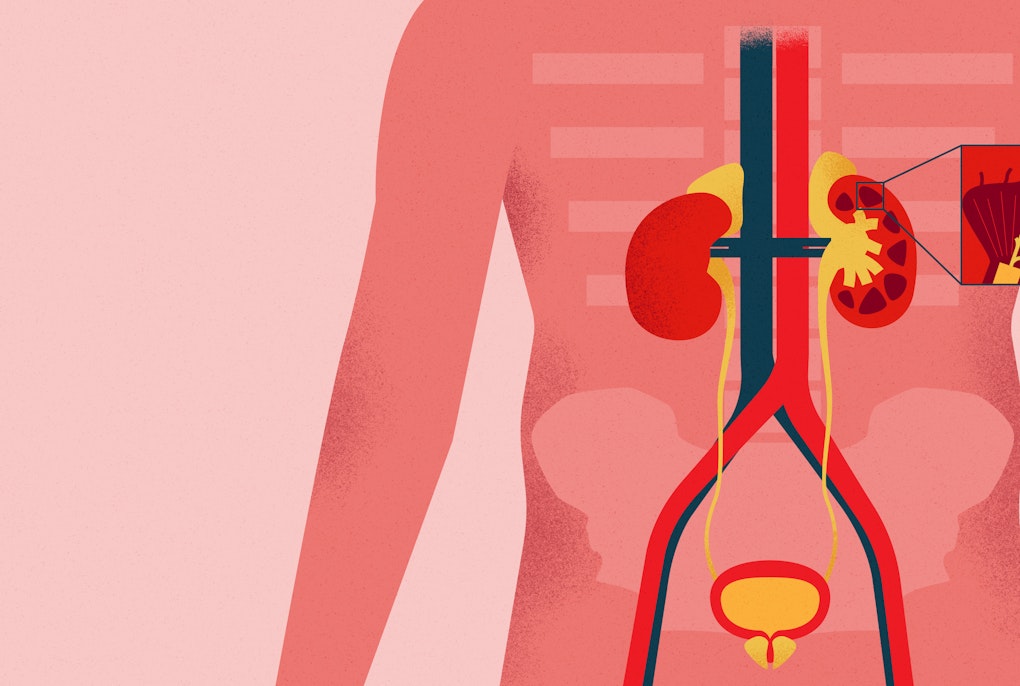An epidemiological analysis reveals the correlation between certain innate personality traits and pain sensitivity – the study has revealed optimistic people are less sensitive. Researchers are not only interested in the result but more importantly, how they got there by studying a general population sample with no overt problems.
A few years ago I volunteered with some colleagues of mine to "test" the sequence of examinations provided for participants of the CHRIS population study. It was a way to give the nurses a hand in streamlining the organization and an opportunity for us to understand how the study works – from the inside. Among the many tests, the one I remember most was the pain test: a type of metal stick was pressed into my palm until it hurt. I had to say "stop" as soon as I felt pain. Five, six seconds? I don't think I lasted longer than that. One thought was buzzing in my head: what a wimp you are. Your grandmother used to take pots and pans without potholders, and you can't even hold up to a little pressure...
It got me thinking, what was it that made my grandmother more resistant to pain? Was she an exception? And, what makes someone able to endure more pain?
A study recently published in the Journal of Affective Disorders, which uses data from the CHRIS population study, reveals that not only do subjective perception and acquired experiences have something to do with pain thresholds, but so does affective temperament, which can be explained as the "basal tone of emotionality," that is, the genetically predetermined basis that influences the intensity and magnitude of the emotions we all feel.
"Those with temperament traits that are more prone to anxiety and instability-known as 'cyclothymic-related temperaments'-are also more susceptible to pain, while optimists and energetic personalities -known in technical parlance as 'hyperthymics', are more 'protected,'" explains Ettore Favaretto, a psychiatrist and psychotherapist, head of the Bressanone/Brixen’s Mental Health Center and the first author of the study. "The result does not take us by surprise, but it goes well beyond expectations, and is particularly interesting because it comes from the analysis of data from 3,804 people between 18 and 65 years old from the general population of South Tyrol, and it is not a sample selected on the basis of a particular temperament or for the presence of a particular pathology."
CHRIS participant tests
People participating in the study were subjected to two tests to examine different aspects of our relationships with pain.
The first test concerned pain threshold and was measured with the pressure algometer, the previously mentioned metal stick that in this particular study was pressed into the fingertip of the index finger instead of the palm.
On average, participants asked for the "stop" when a pressure force of 3.1 kg/cm2 was exerted on the digit, equivalent to two large bottles of orange soda being placed on your index fingernail.
"For obvious ethical reasons, we could not subject participants to above-threshold pain levels, hence the use of questions about experiences or imagined situations."
Ettore Favaretto
The second test was a Pain Sensitivity Questionnaire (PSQ) which consisted of 17 questions. Participants were asked to recall or imagine their reaction in situations typically above the pain threshold, for example, slamming their shin against a sharp edge or their fingers in a drawer. How much pain had one felt or imagined to feel on a scale of zero to 10?
"For obvious ethical reasons we could not subject participants to above-threshold pain, hence the use of questions about experiences or imagined situations," Favaretto points out.
The results of these tests were then cross-referenced with those on affective temperaments.
Affective temperaments and how they are measured
Modern research studies five affective temperaments: anxious, irritable, depressive, cyclothymic – characterized by unstable mood, anxiety and depressive tendencies – and hyperthymic characterized as typically sunny, positive and energetic.
These traits are typically identified by self-assessment questionnaires. For the study involving CHRIS data, researchers chose a shorter modified version of the TEMPS-M (Temperament Evaluation of Memphis, Pisa, Paris and San Diego) test in which 35 statements with responses ranging from "no" to "very much" had to be answered and certain statements about the nature of the participant commented on. For example: people tell me that I am incapable of seeing the good side of things; for as long as I can remember, I have always been a guy who worries about everything; I constantly oscillate between feeling overconfident and insecure about myself; when I'm contradicted, I can get into arguments.
The researchers did not attribute one temperament to each participant. "To get comparable results, we gave each person a score on a uniform scale for each of the temperaments. Then, we cross-referenced this data with the results on pain sensitivity," explains Roberto Melotti, a biostatistician at Eurac Research.
"Regarding the pain threshold experiment measured with the algometer, those with lower sensitivity waited longer before saying 'stop,' while cyclothymic-related temperaments have a lower threshold and stop the experiment sooner."
Roberto Melotti
The left column shows the pain sensitivity results. In hyperthymics, i.e., optimists, it's lower (horizontal dashes to the left). Hyperthymics imagine they feel little pain in the situations proposed by the questionnaire. "The situation is clearly mirrored with regard to the pain threshold measured experimentally with the algometer: those with lower sensitivity wait longer before saying 'stop' (horizontal dashes for the hyperthymic category to the right), while cyclothymic-related temperaments have a lower threshold and stop the experiment sooner," Melotti continues.
Now, what will you do with this information?
Studies are continuing, for example to see whether the affective temperament-pain perception correlation also applies to other aspects of people's lives, such as sleep quality. "These are all studies that go in the direction of personalized medicine. Until now, temperaments have been looked at mainly as precursors to overt psychiatric conditions, particularly related to bipolar disorder and major depression. But now we have shown that they also significantly affect other physical characteristics and physiological aspects in the general population. We have shown what the writer Scott Fitzgerald said, namely that 'of all natural forces, vitality cannot be transmitted. [...] You either have it or you don't, like health or brown eyes,'" explains Favaretto, who hopes, "At this point, we could, for example, go so far as to modulate chronic pain therapy by also taking into account temperament profiles." But for this there is still much to be understood because data from this type of research is rather scarce. Above all, whether the use or perhaps even abuse of pain medications is influenced by the prevailing affective temperament needs to be examined. In the field of both alcohol and substance addiction more is understood.
As for me, well, I feel a bit deflated about my sluggish performance, but then again surely if I practiced moving boiling pots every day my hands would get stronger. There is no better or worse proof. It's just the way we are. Different.
Small insight: personality, temperament and character
A person's personality consists of two elements: temperament, which is biogenetically predefined, and character, which is the combination of lived experience, education and environmental influences.
Different temperament traits normally coexist in everyone. Only in up to 10 percent of the population is there one temperament that clearly dominates over the others.
People in whom the hyperthymic, i.e., optimistic, temperament dominates are often charismatic characters who tend to involve other people and spur groups along.
People in whom cyclothymic temperaments dominate are predisposed to develop more or less severe affective disorders, such as anxiety, depression or bipolar disorders. Context and experiences are crucial in this regard to contain the risk.
The paper
The study was a collaboration between the South Tyrolean Health Authority and Eurac Research, with contributions from the Universities of Pisa and Vienna.
Pain sensitivity is modulated by affective temperament: Results from the population-based CHRIS Affective Disorder (CHRIS-AD) study - ScienceDirect





